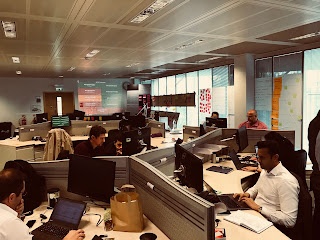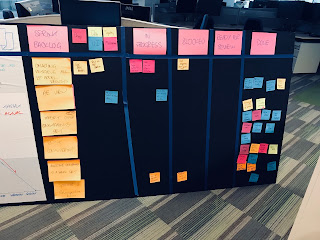This series (see Part 1) takes the reader on a journey, taking a peek inside a Red Hat Open Innovation Labs Residency. A top tier experience for any customer*, a residency exposes them to open collaboration, open technologies, and fast agile application delivery methods.
This experience often escapes organizations attempting digital transformation. Through submersion in an Open Innovation Labs residency, Red Hat shares its experience in managing, developing, and delivering solutions. This is about successfully achieving organizational goals using open communities, open technologies, and open collaboration.
Join me as I share experiences from inside a real life residency. Watch how Red Hat engages intimately with a customer by exposing them to new ways of working. It is demonstrated by leveraging open technologies using fast and agile application delivery methods with open collaboration.
In Part 1, I shared what’s in a Red Hat Open Innovation Labs Residency. For part two, let’s look at what I encountered in my first real life residency.
Open Innovation Labs Residency in a Nutshell

Pop-up-lab is a great residency experience
After obtaining the background found in part one of this series, I was very curious as to what a residency would look like in real life.
I wanted to spend some time on the ground, interacting and observing what this was all about. Luckily, I got the chance to join the end of a residency running in London, which was a four-week residency.
This meant I got to drop in on the end, get a tour and enjoy the best part of any residency, the delivery of the final product.
Arriving on the scene, I was met with something much different than the video tour shown in part one (scroll down on this page) of this series where we saw the Open Innovations Labs office in London. This residency was a pop-up-lab, a residency experience chosen to take place at a location near the customer.
A whole section of a floor was transformed in just hours in to a dynamic, energetic and mesmerizing place filled with agile task boards, projections of product builds on the walls, and all kinds of colored sticky notes literally everywhere.
Crazy sounds everywhere
There were big toy buttons lying all over the place that make cool sounds when pushed. Imagine “BULLS*#T” or “THAT WAS EASY” ringing out in a booming voice to mark milestones for a sprint.
Another enthusiastic effect, high-fives expressing tasks completed by a development team.
The activities in the residency drew not only my attention as an observer; it induced a constant flow of curious employees from all over the campus to witness these activities.
They would ask questions, browse the posters, sticky notes, and sprint cards. Many showed signs of regret of not being able to participate in the energy and fun development that was taking place right under their noses.
In Action
A four-week long residency started with an overview of the problem, focusing the team together with the business of defining what needs to be done. The first week encompassed defining outcomes of the residency and how to work toward those goals.
Sprint cards on the walls and visible for all
After deciding the items to be completed, fitting them in to task lists for the coming three sprints over three weeks was next. These sprints were represented by large cards on the wall with the task to be done; and then were moved from one column to another to signify completion.
Many high fives and buttons are pushed along the way!
Developers focus on working with the product code base in pairs. Deviations occur when new areas of technology are encountered. Developers react swiftly by switching from pairs to many-to-many programming teams. Everyone is working on the new technology skills, sharing knowledge across all of the development team. Once mastered, everyone takes the new skills back to their paired programming teams.
Each sprint week ends with a showcase of the progress in a mini-demo day. Business owners are part of the residency and gather to see the functionality working and to verify progress of the development teams.
A sprint is a promise, and that promise is validated in short iterations.
Closing out the final week, it’s a sprint to the finish line. This culminates in special events known as Demo Days, where different stakeholders present team results in the form of live demonstrations.
The final article in this series will cover these demo days.
Columns used for sprints too
Interested in more about the Open Innovation Labs? Then catch up on the part one in this series or stay tuned for the rest of this series examining the residency process.
* Note that when referring to a customer, I am also referring to our partners and the various opportunities that might be looking to become a customer.
Last updated: February 6, 2024
